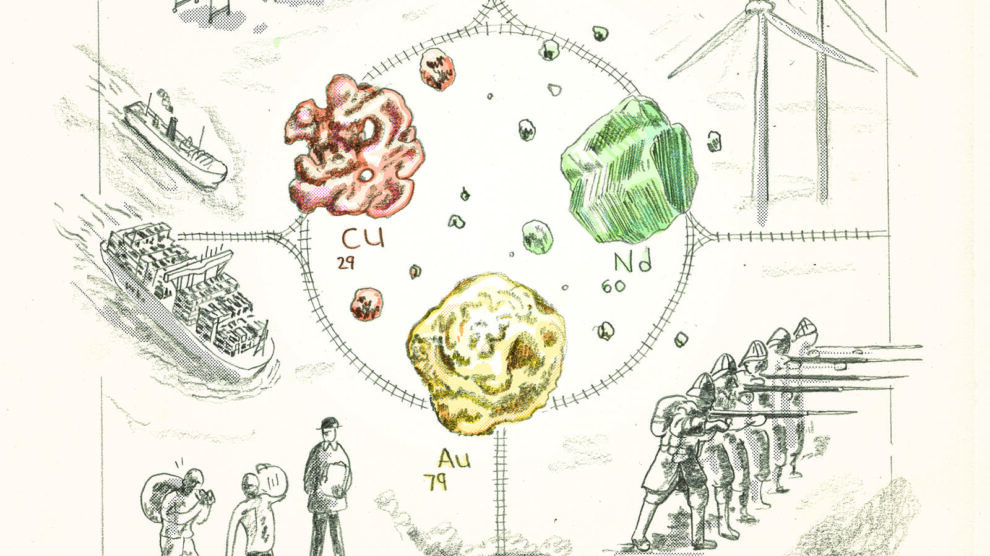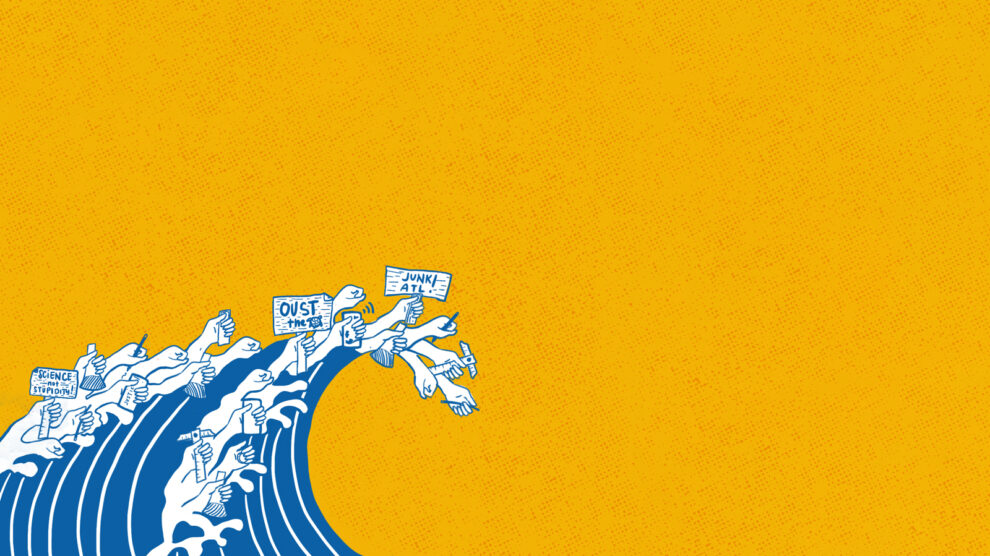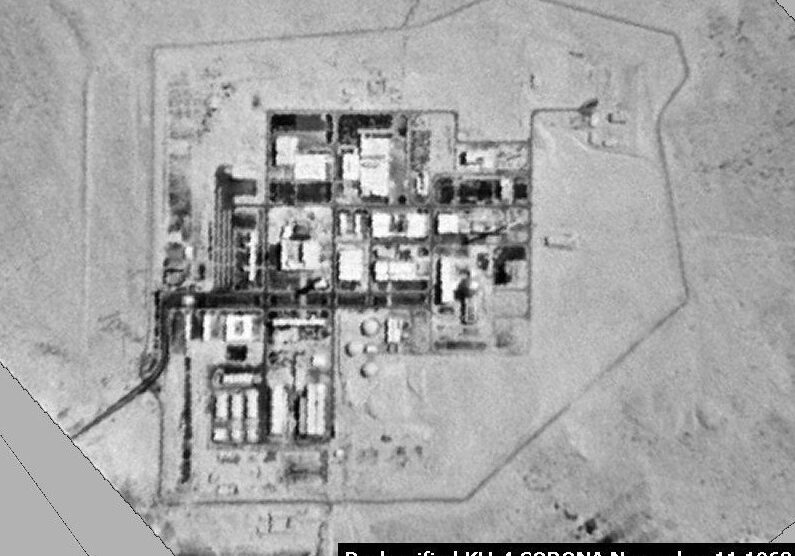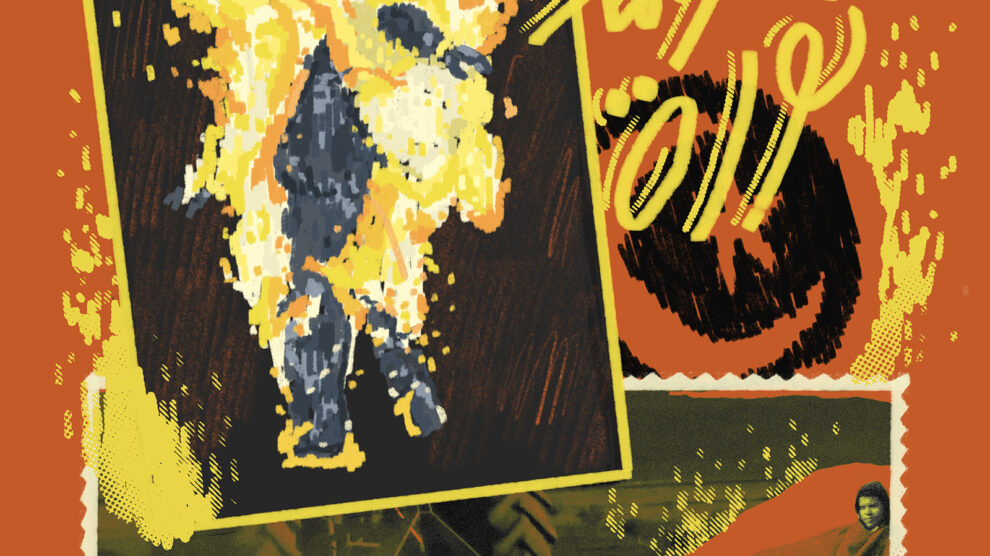STEM on Hold: The Impacts of the Internet Shutdown in Jammu and Kashmir
By Mudasir Firdosi
Volume 23, number 1, Science Under Occupation

The internet shutdown that started in Jammu and Kashmir (J&K) on August 5, 2019, and was eased only on January 15, 2020, is the longest internet shutdown ever in any democracy.1 The shutdown started as soon as the Indian government permanently annexed the state of Jammu and Kashmir. The Jammu and Kashmir Reorganisation Act adopted by the Indian Parliament abrogated articles 370 and 35a of the Indian Constitution, which gave special semi-autonomous status to the state.2 Many legal experts asserted that this was unconstitutional and imposed unilaterally without the consultation of the local population.3 Moreover, large sections of the political and civil leadership of J&K were illegally and indefinitely detained4.
In 1948, one year after the monarch of Jammu and Kashmir acceded to India, the United Nations passed a resolution that the people of J&K had the right to hold a referendum on how they wanted to be ruled.5 Yet no government that has come to power since the independence of India has recognised the UN resolution. Instead, the current right-wing Hindutva-minded government in India revoked the special status of J&K and demoted and divided the state into two union territories, to be ruled directly from New Delhi.
Since August 5, 2019, the lives of Kashmir’s eight million residents have been thrown into chaos, with curfews and restrictions on the freedom of movement.6 Cities and towns have been overrun by the Indian armed forces, who have used deadly force to quell any protests against this unilateral decision by the Indian state. The Indian government put the entire populace under lockdown, with thousands detained in jails—including minors as young as nine years old—without any legal recourse.7 On top of shutting down all means of communication, including landline and mobile phones, the Indian government shut down the internet in J&K, crippling researchers and students in schools, colleges, and universities across the mountainous state.8
How the internet shutdown is affecting Kashmiri scientists, engineers, medical students, and medical professionals
A United Nations report in 2011 argued that disconnecting individuals from the internet is a violation of human rights and goes against international law.9 The report further notes “the unique and transformative nature of the Internet not only to enable individuals to exercise their right to freedom of opinion and expression, but also a range of other human rights, and to promote the progress of society as a whole.”15 Unfortunately, internet shutdowns are not new to Kashmir, but this complete shutdown of all communication links is the first of its kind in modern times. Since 2012, the internet has been entirely shut down in various places more than sixty-two times.10 A UN report suggests that between April 2017 and May 2018, South Asia ranked highest on shutdowns in the world. Most of the shutdowns were in India, with half of all shutdowns in India reported from the Kashmir Valley.11 Sixty-seven percent of the world’s documented shutdowns took place in India in 2018.12
All educational establishments, including secondary colleges, universities, medical schools, and engineering colleges, were shut down on August 5, 2019, with no official declaration. Parents were left to educate and care for their children within the confines of their homes.13 At the two central universities and nine state universities in J&K, all work stopped, affecting an estimated two hundred researchers. These institutions include medical and veterinary colleges, technological centers, and research institutes that provide important services and house research in the sciences, humanities, and medicine. Medical schools affiliated with the University of Kashmir, which housed research and provided medical care, were also shuttered.14
Despite many struggles for independence and workers’ rights, and against poverty, Kashmiris have maintained better development indicators like infant mortality rate, life expectancy, and poverty compared to many other of the Indian states.15 However, with the total closure of local newspapers and media outlets, the rest of the world has been left only to guess what is actually happening on the ground as residents are deprived of urgently needed healthcare, food, medication, and other essential services during these uncertain times.
How to do science and education work under occupation becomes a crucial question in these circumstances. The answer: through sheer will and silently, or not at all. Many researchers, in desperation, travelled thousands of miles to other parts of India to access the internet. If they could afford it, they stayed and continued working on their projects, at significant personal financial cost. Scholars who were due to submit their dissertations were unable to do so. Postgraduate scholars working at the Government Medical College Srinagar told me that they had to travel to Delhi just to access the internet so that they could complete literature reviews for their dissertations. I received frantic phone calls from a scholar who needed access to scientific papers to meet a deadline. After I emailed the papers, they were forced to visit the local police control room to see if they would allow them to access their emails there. Researchers have been able neither to submit papers to journals, nor to respond to queries from reviewers.16
Without any classes for more than three months, 48,000 high school students were forced by administrators to take exams without completing the syllabus or necessary practical work. Most worried that they would not perform well due to the physical and virtual siege on their learning.17 After four months of internet shutdown, the local administration run by the state’s Lieutenant Governor decided to provide some internet access to students in the local deputy commissioner’s office at district headquarters. But only thirty computers were provided for 24,000 National Eligibility Entrance Test (NEET) aspirants seeking to use the highly competitive test to gain admission to medical schools across India.18
Research on the impact of climate change in the Himalayas also may have been affected. A multi-year project at the University of Kashmir, part of the Himalayan Alpine Dynamics Research Initiative (HIMADRI), in which scientists have been studying the alpine tree-line ecotones to observe the impacts of climate change, had to be stopped last year.19 HIMADRI works on the protocol of the Global Observation Research Initiative in Alpine Environments (GLORIA).20 Units of GLORIA have been established worldwide on different continents.21 This study on climate change is of utmost importance because of the strategic role of the Himalayas and the location of this research facility in Gulmarg. The scientists have stressed that the study is of “extreme significance” because in-situ data is not available in developing countries, and “absolutely not in the Himalayas.”22 Alpine ecosystems are likely to show the effects of climate change earlier and more clearly than some other ecosystems.23 Hence the interruption of this study at such a strategic location is very significant for climate change studies overall.
The conflict between the government of India and the people of Kashmir continues, and it is difficult to predict when the internet, and other freedoms due to the Kashmiri people, will be restored. The situation has also had negative impacts on Kashmiri researchers working in other parts of India with reports of discrimination and worries about their safety.24 Given the history of the dispute, the situation is unlikely to improve in the near future as most Kashmiri leaders still remain imprisoned and the local administration is adjusting to the demotion of the erstwhile state of J&K into a union territory.
What can be done to create a stronger, more resilient scientific, medical, and engineering infrastructure in these circumstances?
Given that nothing is possible in Kashmir unless approved by Indian authorities, it is hard to envisage the future of research and academic work at present. The deep mistrust of Kashmiris by the Indian state and the consequent surveillance of Kashmir is another hurdle. However, with better networking, Kashmiri scholars working in Kashmir and in the diaspora could offer some hope for the continuity of training, scholarships, and fellowships to build upon the work of existing scientists in various streams of science and technology, and so regain their self-reliance one day. Kashmiri scholars based around the world ought to unite in providing support, guidance, and even monetary help to budding scientists from J&K. International scientific bodies and organizations should demand that the Indian state revoke the ban on academic work and also provide suitable fellowships and programs for deserving candidates from J&K. Kashmiri scholars have worked against all odds and have been able to build an evidence base that documents the occupation, human rights abuses, effects on climate and the local environment, physical injuries to people, and the ongoing psychological trauma.25 Kashmiri scholars, especially women, working across the globe at various prestigious institutes, are furthering this scholarly work and in the process have been able to raise awareness about the Kashmir dispute. They are among the only voices of Kashmiris during these months of shutdown.26
About the Author
Dr. Mudasir Firdosi is a Kashmiri psychiatrist, health advocate, writer, and poet. He completed his medical degree and postgraduate training in psychiatry in Jammu and Kashmir. He is a member of the Royal College of Psychiatrists, London and is currently working as a consultant Psychiatrist and Honorary Senior Lecturer at St George’s, University of London. He is a researcher and has published on trauma and post-traumatic stress disorder in Kashmir. He writes regularly on varied issues including mental health, human rights, conflict and psychological distress, and medical education.
References
- Mitch Prothero, “India’s 134-day-long internet shutdown in Kashmir is now the longest ever imposed by a democratic state,’’ Insider, December 16, 2019, https://www.insider.com/kashmir-internet-shut-down-imposed-india-longest-ever-by-democracy-2019-12.
- The Jammu and Kashmir Reorganisation Act, 2019, No. 34, August 9, 2019, https://www.prsindia.org/sites/default/files/bill_files/Jammu%20and%20Kashmir%20Reorganisation%20Act,%202019.pdf.
- Press Trust of India, “Article 370 abrogation illegal, J&K people bypassed: Petitioners to S,” Business Standard, January 8, 2020, https://www.business-standard.com/article/pti-stories/abrogation-of-article-370-unconstitutional-people-of-j-k-bypassed-petitioners-to-sc-119121001263_1.html; Sakal Bhushan, “A dilution that falls short of the law,” The Hindu, September 16, 2019, https://www.thehindu.com/opinion/op-ed/a-dilution-that-falls-short-of-the-law/article29425212.ece; Mirza Waheed, “India’s illegal power grab is turning Kashmir into a colony,” The Guardian, August 14, 2019, https://www.theguardian.com/commentisfree/2019/aug/14/narendra-modi-kashmir-hindu-first-india-autonomy.
- Fayaz Bukhari, “India extends detention of Kashmir’s political leaders,” Reuters, February 7, 2020, https://uk.reuters.com/article/uk-india-kashmir/india-extends-detention-of-kashmirs-political-leaders-idUKKBN2010O2.
- Victoria Schofield, “Kashmir: The origins of the dispute,” BBC, January 16, 2002, http://news.bbc.co.uk/1/hi/world/south_asia/1762146.stm.
- Sameer Yasir, Suhasini Raj and Jeffrey Gettleman, “Inside Kashmir, Cut Off From the World: ‘A Living Hell’ of Anger and Fear,” The New York Times, August 10, 2019, https://www.nytimes.com/2019/08/10/world/asia/kashmir-india-pakistan.html.
- Kumail Sayeed, “Kashmir Turned Into an Open-Air Prison,” Jacobin, September 2019, https://jacobinmag.com/2019/09/kashmir-curfew-occupation-article-370-diary-narendra-modi/; Joe Wallen, “Young boys tortured in Kashmir clampdown as new figures show 13,000 teenagers arrested,” The Telegraph, September 25, 2019, https://www.telegraph.co.uk/news/2019/09/25/young-boys-tortured-kashmir-clampdown-new-figures-show-13000/; Osama Bin Javaid, “Kashmiri children among prisoners in India crackdown,” Al Jazeera, October 16, 2019, https://www.aljazeera.com/news/2019/10/kashmiri-children-prisoners-india-crackdown-191016151632833.html.
- James Griffiths, “You can read this article. An internet blackout means no-one in Indian-controlled Kashmir can,” CNN, August 8, 2019, https://edition.cnn.com/2019/08/08/tech/kashmir-internet-blackout-india-pakistan-intl-hnk/index.html; Sanjay Kumar, “Kashmir’s communication blackout is a ‘devastating blow’ for academics, researchers say,” Science, September 19, 2019, https://www.sciencemag.org/news/2019/09/kashmirs-communication-blackout-devastating-blow-academics-researchers-say.
- Nicholas Jackson, ‘’United Nations Declares Internet Access a Basic Human Right,’’ The Atlantic, June 3, 2011, https://www.theatlantic.com/technology/archive/2011/06/united-nations-declares-internet-access-a-basic-human-right/239911/; United Nations General Assembly Human Rights Council, Seventeenth session, “Report of the Special Rapporteur on the promotion and protection of the right to freedom of opinion and expression,” May 16, 2011, https://www2.ohchr.org/english/bodies/hrcouncil/docs/17session/A.HRC.17.27_en.pdf.
- Amir Ali Bhat, “Kashmir’s internet shutdowns hit schools and businesses but fail to quash dissent,” The New Arab, January 24, 2018, https://www.alaraby.co.uk/english/indepth/2018/1/24/kashmirs-internet-shutdowns-hit-schools-and-businesses-not-militants.
- Office of the United Nations High Commissioner for Human Rights, “Update of the Situation of Human Rights in Indian-Administered Kashmir and Pakistan-Administered Kashmir from May 2018 to April 2019,” July 8, 2019, https://www.ohchr.org/Documents/Countries/IN/KashmirUpdateReport_8July2019.pdf.
- Asmita Bakshi, ‘’India is the internet shutdown capital of the world, LiveMint, updated December 8, 2019, https://www.livemint.com/mint-lounge/features/inside-the-internet-shutdown-capital-of-the-world-11575644823381.html.
- Samaan Lateef, “India orders schools to reopen, but Kashmiri parents keep kids at home: ‘Education is less important than our children’s lives,’” The Independent, August 19, 2019, https://www.independent.co.uk/news/world/asia/kashmir-schools-open-india-pakistan-crisis-a9070431.html.
- Alakananda Dasgupta, “Science in India’s Kashmir Valley in Jeopardy,” The Scientist, September 24, 2019, https://www.the-scientist.com/news-opinion/science-in-indias-kashmir-valley-in-jeopardy-66487.
- Shreya Khaitan, “Fact-checking Amit Shah’s claim that Article 370 and Article 35A kept Jammu and Kashmir poor,” Scroll.in, August 10, 2019, https://scroll.in/article/933319/fact-checking-amit-shahs-claim-that-article-370-and-article-35a-kept-jammu-and-kashmir-poor.
- Pir Azhar, “Internet shutdown Messes with Education in Kashmir,” Video Volunteers, October 31, 2019, https://www.videovolunteers.org/internet-shutdown-messes-with-education-in-kashmir/.
- Mukeet Akmali, “Internet lock down: 30 computers for 24000 NEET aspirants in Kashmir,” Greater Kashmir, May 6, 2020, https://www.greaterkashmir.com/news/kashmir/internet-lock-down-30-computers-for-24000-neet-aspirants-in-kashmir/.
- ENVIS Newsletter, Himalayan Ecology, December 2015.
- Athar Parvaiz, “Kashmir communications ban hits key climate studies,” The Third Pole, October 11, 2011, https://www.thethirdpole.net/en/2019/10/11/kashmir-communications-shutdown-impacts-key-climate-studies/.
- Zubair A. Malik and Mohan C. Nautiyal, “Species richness and diversity along the altitudinal gradient in Tungnath, the Himalayan benchmark site of HIMADRI,” Tropical Plant Research 3, no 2 (2016): 396–407.
- “A brief history of GLORIA,” accessed May 2020, https://gloria.ac.at/scope/history#history-globalnetwork.
- ENVIS Newsletter, Himalayan Ecology, December 2015.
- Georg Grabherr, Michael Gottfried, Harald Pauli, “GLORIA: a global observation research initiative in alpine environments,” Mountain Research and Development 20 (2000): 190–192.
- Sanjay Kumar, “Kashmir’s communication blackout is a ‘devastating blow’ for academics, researchers say,” Science, September 19, 2019, https://www.sciencemag.org/news/2019/09/kashmirs-communication-blackout-devastating-blow-academics-researchers-say.
- See the Kashmir Scholars Consultative and Action Network, https://kashmirscholarsnetwork.org/kscan/about-us/.
- “Updated: Kashmiri Scholars and Members of the International Community Voice Dissent Over India’s Latest Siege on Kashmir,” Inverse Journal, August 8, 2019, https://www.inversejournal.com/2019/08/08/kashmiri-scholars-and-members-of-the-international-community-voice-dissent-over-indias-latest-siege-on-kashmir/; See Stand with Kashmir, https://www.standwithkashmir.org/.





